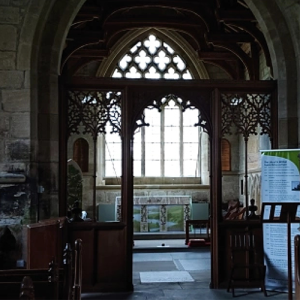Revitalizing Aging Infrastructure: The Challenge of Unsustainable Buildings
Poem
Author
These challenges divert precious resources and energy away from the church’s core mission, hindering its ability to serve the community effectively.
The physical structures that house churches can often present significant challenges. From the perspectives of Anglo-Catholic worship, Radical Orthodoxy, and Christian Metaphysics, many churches in the UK face the struggle of ageing buildings, rising maintenance costs, and the burden of unsustainable infrastructure. These challenges divert precious resources and energy away from the church’s core mission, hindering its ability to serve the community effectively. However, exploring creative solutions, such as shared spaces, community partnerships, and sustainable development, can help churches overcome these obstacles and redirect their focus towards ministry and outreach.
Embracing Stewardship of Sacred Spaces:
Anglo-Catholic worship places a high value on the sacredness and beauty of physical spaces. However, preserving and maintaining ageing buildings can often financially burden churches. The church must approach its physical infrastructure with a stewardship mindset, recognizing that these spaces are not only places of worship but also resources for community engagement and spiritual nourishment. By adopting sustainable practices and seeking innovative solutions, churches can find ways to preserve and repurpose their buildings without compromising their sacredness.
Transforming Infrastructure for Shared Spaces:
Radical Orthodoxy encourages the church to reimagine the purpose and use of its physical infrastructure. Ageing buildings can be repurposed as shared spaces, offering venues for community events, educational programs, and social initiatives. By opening their doors to the wider community, churches can become hubs for social interaction, fostering relationships and partnerships that extend beyond traditional worship services. This approach revitalises the infrastructure and allows the church to fulfil its mission of being a transformative presence in the community.
Building Community Partnerships:
Christian Metaphysics emphasizes the interconnectedness of all aspects of life, encouraging the church to engage with the community actively. By forming partnerships with local organizations, churches can leverage their physical spaces to meet community needs, whether hosting support groups, providing space for educational programs, or collaborating on outreach initiatives. By cultivating strong community relationships, churches can share the burden of infrastructure costs, find opportunities for shared resources, and expand their impact in the local area.
Sustainable Development and Environmental Responsibility:
A key concern of our time is the urgent need for environmental responsibility and sustainable development. Churches can embrace this call by incorporating sustainable practices into their infrastructure. This can include energy-efficient upgrades, renewable energy sources, and responsible use of resources. By prioritizing sustainability, churches contribute to the preservation of the environment and demonstrate their commitment to stewardship and social justice. Such initiatives can also attract community support and collaboration.
Balancing Tradition and Innovation:
As churches navigate the challenges of ageing infrastructure, it is crucial to balance tradition and innovation. While preserving historical and architectural significance, churches can embrace innovative approaches to adapt their spaces for contemporary needs. This can involve flexible seating arrangements, technological enhancements, and versatile spaces that accommodate a variety of worship styles and community activities. By blending tradition and innovation, churches can revitalize their infrastructure while remaining rooted in their heritage and maintaining their spiritual identity.
Conclusion:
Revitalizing ageing infrastructure is a significant challenge for churches in the UK. However, from the perspectives of Anglo-Catholic worship, Radical Orthodoxy, and Christian Metaphysics, opportunities abound for creative solutions. Churches can overcome the obstacles of unsustainable buildings by embracing stewardship, transforming spaces for shared use, building community partnerships, prioritizing sustainability, and balancing tradition with innovation. Through these transformative steps, the church can redirect its focus towards its core mission of ministry and outreach, utilizing its infrastructure as a vehicle for spiritual nourishment, community engagement, and transformative presence in the world.
Here are some other posts folks have read:
About Rev Lloyd Hobbard-Mitchell
Rev. Lloyd Hobbard-Mitchell, an Englishman deeply connected to Thailand, was ordained to the Sacred Priesthood on 28th May 2023.
In addition to his religious journey, he has worked as an online English teacher and pursued a career as an artist. He has also operated a tour desk business with his wife within international brand hotels.
Lloyd has extensive experience in the voluntary sector, specifically in addressing homelessness and social welfare.
He is a Fellow of the Royal Geographical Society and embraces opportunities to meet new people, see new places, explore cultural similarities, and celebrate differences.






